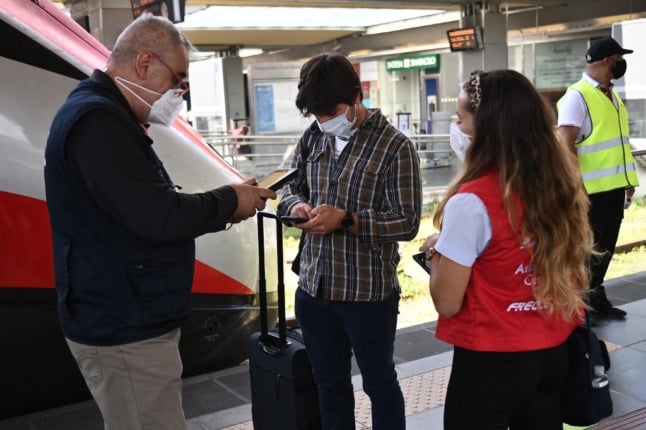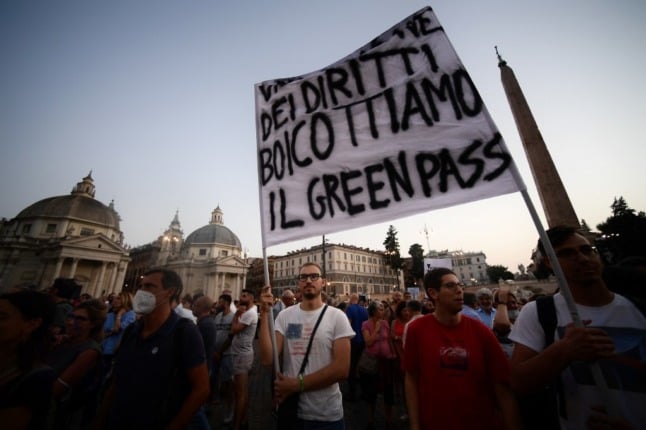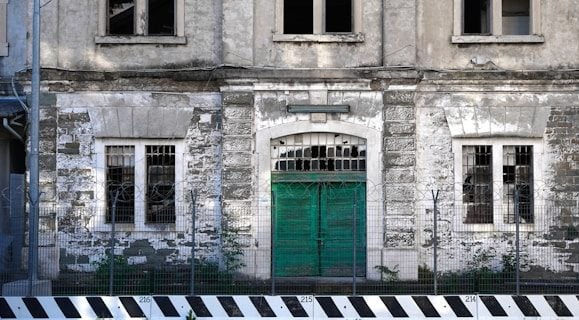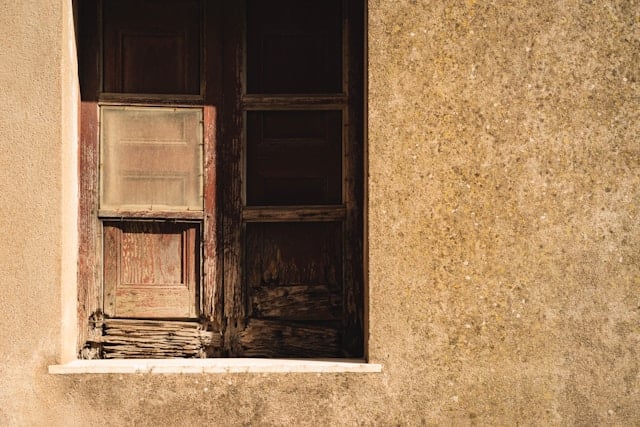Carta d’identita, tessera sanitaria, permesso di soggiorno, patente di guida… the list of documents essential for everyday living in Italy is long, and now the certificazione verde is set to join the pile.
In a bid to boost vaccination coverage and keep infection rates down, the Italian government has announced its intention to make the health certificate (also known as the ‘green pass’) obligatory for all employees in both the public and private sectors from next month.
Since it was launched in the summer, the green pass – which indicates that the holder is vaccinated, recovered, or has had a recent negative coronavirus test – has already been necessary in order to access certain public places including stadiums, libraries, and museums.
EXPLAINED: How Italy will enforce the new ‘green pass’ rules in all workplaces
My experience of the system so far is that its implementation has been relatively straightforward and light-touch (though I know that experience hasn’t been shared by everyone). Of course, that could all change when the enhanced system is rolled out, but I’ve seen nothing to suggest that the system will flounder under the increased stress of its wider application.
For the technologically literate, it’s relatively simple to generate your green pass and install it on your phone, assuming, of course, you’ve been able to access the vaccination programme in the first place.
Undoubtedly some will require assistance grappling with the technology, but with printed copies of the pass also acceptable, there is no reason (in theory at least) for anyone to be left behind.

I carry a PDF version of the document on my phone, and that has been sufficient to satisfy any demands for it that I have encountered so far. In the early days, I also carried a printed copy, in case of any technological mishaps, but I haven’t yet suffered that inevitable indignity.
In reality, I’ve only been asked to show my pass on a handful of occasions – most notably, to access the library and to enter the cavernous Stadio Bentegodi to cheer on Hellas Verona, my local team. I’ve also been asked to show my pass at a couple of bars, those murky places I tend to frequent that have indoor-only space.
Of course, there’s no requirement to have a green pass if you’re eating or drinking all’aperto [outdoors], and the whole procedure, if you can even describe it as such, is simple, efficient and discreet, with bar staff acting with admirable good-faith, common sense and discretion. In some cases, it’s enough to simply affirm that you have the pass, without actually showing it. In others, a quick glance is all that’s required.
READ ALSO: Where do you now need to show a Covid green pass in Italy?
At the stadium and the library, a more ‘thorough’ ID check is performed, to ensure that the name on your green pass matches the name on your ID, but again it’s hardly an onerous process.
Of course, documents are a way of life here in Italy. Italians, in common with most other developed nations, are long-accustomed to having a mandatory system of identification.
Along with the ubiquitous codice fiscale [tax code], Italians go nowhere without their carta d’identità, and are accustomed to having to produce it (to pick up a parcel from the post office or to check into a hotel, for example).
Indeed, the concept of a society, such as the United Kingdom, that doesn’t have a mandatory system of identification is completely alien to your average Italian. When I occasionally explain to students that no such system exists in the UK, I am generally met with profound befuddlement and disbelief: “But….but…” they stammer, “How do you prove who you are?”
The libertarian notion that in a free society you shouldn’t have to prove who you are is a completely alien concept to them.
So, in a society in which procuring documents and proving your status is practically a national pastime, one extra form to remember shouldn’t cause too much controversy.
READ ALSO:
- Beat the queues: 19 bits of Italian bureaucracy you can do online
- Italian bureaucracy: What is a SPID and how do you get one?
- EXPLAINED: What are the different documents Italy’s British residents need after Brexit?
The most persistent argument I’ve heard against the green pass is that it is the thin end of a creeping wedge of Covid-enabled authoritarianism. First, we were asked to have the vaccine, then it became a necessity. Now, we must prove that we’ve had it in order to go about our daily lives. Where does it end? There’s even a third dose in the pipeline now. Will that too become mandatory?
Indeed, there is a risk that some of the measures unrolled during the pandemic will prove very tricky to roll back, as big business and bureaucrats alike cling on to systems and procedures that have yielded an easy profit or a systemic benefit.

The library, for example, is one place where the new system may have delivered some net gains for the institution, at the expense of the fundamental freedoms of the user.
After 18 months, it’s only in recent weeks that Verona’s Biblioteca Civica has reopened its doors to users. To access the building, its archives and reading rooms, you now need to use an app to book a four-hour slot. On arrival your temperature is checked, as well as your green pass and identity card.
Once a haven for the destitute and the lonely (I occasionally fell into that category myself), the enhanced checks in place at the library undoubtedly have a chilling effect for the casual user, a consequence of which is that access is now restricted to the most avid scholars and researchers (and me).
I can see why maintaining that approach may appeal to library administrators long after the Covid pandemic passes, but I hope that the library will once again become the welcoming, non-judgemental place it once was.
Meanwhile, after everything we’ve been through these past 18 months – long periods of virtual house arrest, home-schooling, profound limitations on our movement, crippling restrictions on our work life, and isolation from loved ones and family – having to carry a simple piece of paper to show that we’ve been vaccinated seems like a small price to pay. But I can’t help but wonder what’s coming next.
READ ALSO: ‘What it was like travelling home to the UK from Italy after two years’
Richard Hough has lived in Verona since September 2011 and writes about the region’s history, football, wine and culture. His new book, Rita’s War, a true story of persecution, resistance and heroism from wartime Italy, is available here. He is currently writing his next book about wartime Verona.




 Please whitelist us to continue reading.
Please whitelist us to continue reading.
Would you have any updates on when is the likelihood of them accepting other vaccines like Covishield (Astra-Zeneca manufactured in India)? The mandatory green pass without acceptance of foreign vaccines will be punitive for people who followed the rules but have shitty luck in general.
Covishield has now been approved both for entry and the green pass per this article and other news reports (mostly Indian) that I found through a google news search yesterday. https://www.schengenvisainfo.com/news/italy-recognises-covishield-vaccine-as-valid-proof-of-immunity-for-travel/
Thanks Bekah. I too read the announcement! 🙂
I’ve also read that the European Union expects Novavax to be available around October 2021. Are you seeing any updates on this vaccine being available? Especially in Florence?